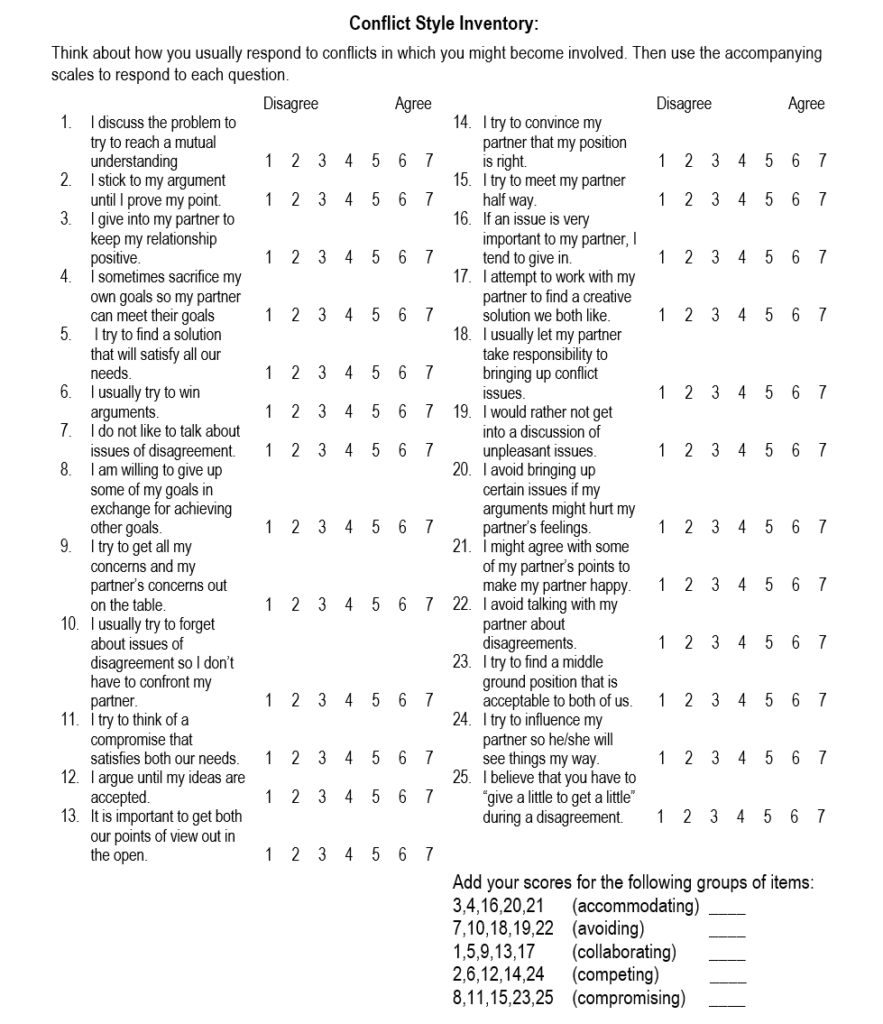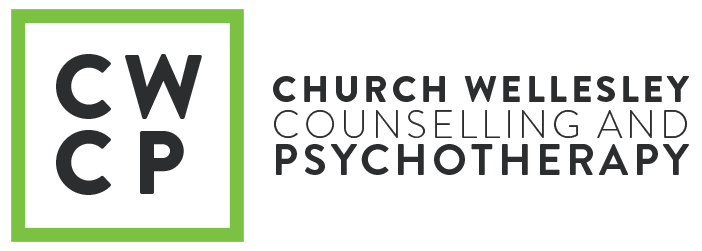A frequent discussion point in clinical work is interpersonal communication. I recall one intake session when I asked a patient about his history of familial conflict and interpersonal communication:
- Therapist: “So tell me, how did your parents navigate conflict with you?”
- Patient: *Said with pride* “My parents never had conflict!”
- Therapist: “And you consider the absence of conflict a positive?”
- Patient: “Of course – how is conflict positive?”
- Therapist: “Well, conflict can actually serve a number of positive functions. For example, they can:
- Develop an increased cohesiveness and connection through mutual understanding;
- Foster creativity by helping us acquire new ways of understanding issues or thinking about behaviours in alternative capacities;
- Help us learn better ways of handling future conflicts which leads to an improved ability to better navigate more serious and / or dysfunctional conflict;
- Instill a sense of closeness and trust (“we got through that!”);
- Provide us with important opportunities to assess the viability of our relationships;
- Strengthen our relationships by increasing our confidence and trust in one another; and
- Uncover problems which can then be mutually solved.”
- Patient: “Oh…”
- Therapist: “So in the absence of your parents modelling, where did you learn how to engage in effective and meaningful conflict?”
- Patient: “Well, I just don’t talk about conflict – isn’t that good enough?”
- Therapist: “Not really – because what you are demonstrating is a form of deception insofar as you are pretending that things are okay when they really aren’t. It seems no one ever taught you about dysfunctional conflict either?”
- Patient: “What do you consider dysfunctional conflict?”
- Therapist: “Dysfunctional conflict is characterized by:
- One or both parties aspiring to defeat (or sometimes even hurt) the other person;
- Reliance on deception, force, threats, and / or violence;
- Rigid inflexibility; and
- Undermining of the emotional climate in the relationship in order to ‘win’.
In essence, dysfunctional conflict can create serious relationship problems, including anxiety, emotional strains and schism, lasting resentment, and personal pain.”
As is often the case, this above clinical example is quite normative – patients seldom understand that conflict can actually be functional. And frankly, neither did I until I learned about conflict dynamics from one of my university professors (Ms. Alana Samson at the University of Victoria, now retired).
A really helpful and interactive resource Professor Samson shared with us was the Conflict Style Inventory – shown here:

After calculating your scores in the above groupings, below you will find descriptions to provide insight into your specific conflict styles:
1. Avoidance: Low Assertiveness and Low Cooperation
This person’s style is to withdraw or “lose and walk away.” He or she may actually physically flee or leave the scene of a conflict. The avoider aims to maintain the appearance of indifference. They see conflict as a useless and potentially punishing endeavor. Rather than face it and have to handle the frustrations and challenges of conflict, they physically and mentally separate themselves from the situation. By withdrawing and refusing to deal with a conflict, they relieve themselves of the psychological relational burdens imposed by it. Avoiders give up their goals and sometimes even their relationships. Avoiders tend to diminish the importance of the conflict and the interests of both parties. Instead, they act as if they don’t care; they may change the subject or make jokes.
2. Competitive: High Assertiveness and Low Cooperation
This person’s style is to force their opinions of others; they aim to attain their own goals while ignoring the concerns of the other. They adopt a win/lose mindset, exhibiting a strong need to win or defeat those with whom they are in conflict. They will do almost anything to defend their position – confronting, attacking their self-concepts and compelling them to concur by psychological domination or even physical force. They do this despite the cost incurred, the harm caused, or the fact that others may view their behaviour as destructive. Their strategies in conflict may include threats, accusations, name-calling, denying all responsibility for all wrongdoings. They are often defensive and have generally poor communication skills.
3. Compromising: Moderate Assertiveness and Moderate Cooperation
This person is in the middle range in terms of both assertiveness and cooperation. They aim to find the middle ground by working to ensure both parties gain something in a conflict – usually by giving up something as well. This style leaves both individuals only partially satisfied. Compromisers tend to appeal to fairness and negotiate trade-offs in an effort to reach a quick and easy solution. Although it may sometimes be the best choice, compromise is only moderately effective because it requires sacrifice on the part of both individuals and precludes the search for more creative solutions.
4. Accommodative: Low Assertiveness and High Cooperation
This person’s style is unassertive and cooperative. Accommodators typically “give in and lose”. They typically overvalue the maintaining of relationships and undervalue the attainment of their own goals. Their main concern is to do whatever they must to smooth things over and ensure that others like and accept them. Because they believe conflict should generally be avoided in favor of harmony, accommodators are appeasers; in an effort to preserve the relationship, they smooth over disagreement and conceal ill feelings. This pattern can precipitate an uneasy, tense relational state characterized by a weak, self-sacrificing style. Indirect and passive in their approach to conflict, Accommodators tend to trivialize conflict by glossing over differences in an effort to downplay disagreements. This style is generally ineffective in the sense that the accommodator usually feels powerless and fails to meet his or her own need and goals.
5. Collaborative: High Assertiveness and High Cooperation
This person’s style is to adopt a “win/win” approach. They are problem solvers who actively seek to maximize their own goals and those of the other party to ensure full satisfaction whenever possible. Collaborators see conflict as a means of improving relationships (conflicts reveal problems which can then be solved). These individuals recognize that conflict is normal and can be helpful and believes that every person in a conflict holds opinions and ideas that deserve to be aired. Collaborators are able to openly discuss differences without resorting to personal attacks. They are not satisfied until they discover a solution that achieves both parties’ goals. They tend to be generally highly competent communicators.
Overall, conflict is not a skill that is proactively developed within our family of origin. The hope of this post is to increase your awareness of your current conflict style and offer insight as to areas you might improve.
Want to learn more about developing your interpersonal communication style? Check out The Relationship Cure: a 5 Step Guide to Strengthening Your Marriage, Family, and Friendships by John Gottman and Joan DeClaire.
Support a local bookstore:
Books and Company, Picton, ON:
https://pictonbookstore.com/item/N2vrDYHpYltHKxCi2XYzOw
Caversham Booksellers, Toronto, ON:
https://www.cavershambooksellers.com/search/9780609809532
Mac’s Fireweed Books, Whitehorse, YT:
https://www.macsbooks.ca/item/N2vrDYHpYltHKxCi2XYzOw
References
Samson, Alana. Conflict Style Inventory. In-Person Class Lecture. ED-D 316, Communication in Interpersonal Relationships. University of Victoria, Victoria, British Columbia, February 2013.
Want to know more about a specific topic related to psychotherapy? Send me an email (adam@cwcp.ca) and let me know so I can write a blog post about it. And if you would like an honorable mention for your recommendation, let me know that too and I will include your name!


